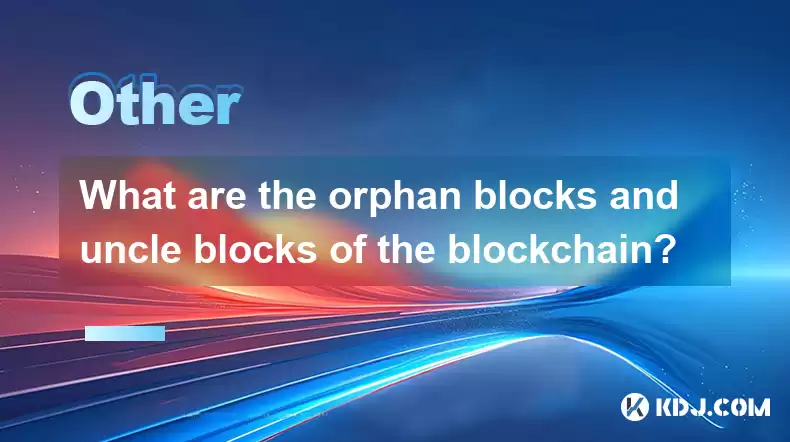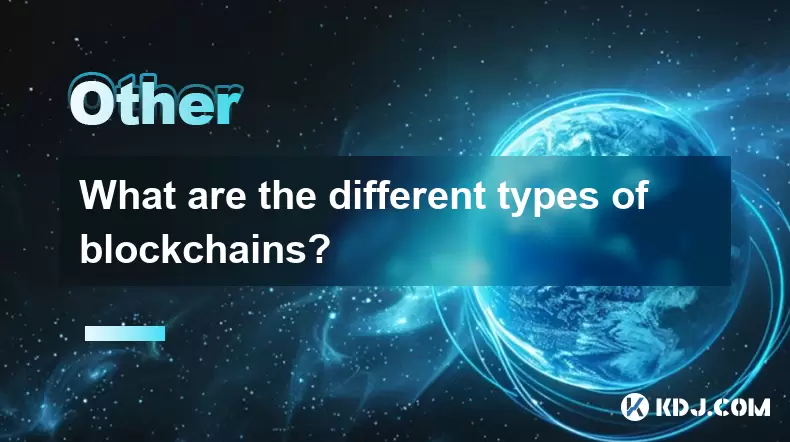-
 Bitcoin
Bitcoin $112400
-1.07% -
 Ethereum
Ethereum $3409
-3.27% -
 XRP
XRP $2.784
-6.60% -
 Tether USDt
Tether USDt $0.9997
-0.03% -
 BNB
BNB $739.3
-2.09% -
 Solana
Solana $158.0
-2.90% -
 USDC
USDC $0.9998
-0.02% -
 TRON
TRON $0.3213
-0.94% -
 Dogecoin
Dogecoin $0.1929
-5.01% -
 Cardano
Cardano $0.6974
-2.82% -
 Hyperliquid
Hyperliquid $36.69
-2.31% -
 Sui
Sui $3.327
-4.80% -
 Stellar
Stellar $0.3672
-5.18% -
 Chainlink
Chainlink $15.65
-3.07% -
 Bitcoin Cash
Bitcoin Cash $525.0
-1.68% -
 Hedera
Hedera $0.2291
-6.00% -
 Avalanche
Avalanche $20.91
-2.96% -
 Ethena USDe
Ethena USDe $1.000
0.00% -
 Toncoin
Toncoin $3.520
-1.12% -
 UNUS SED LEO
UNUS SED LEO $8.968
0.14% -
 Litecoin
Litecoin $105.7
0.26% -
 Shiba Inu
Shiba Inu $0.00001181
-1.79% -
 Polkadot
Polkadot $3.492
-2.08% -
 Uniswap
Uniswap $8.800
-3.10% -
 Dai
Dai $0.9999
-0.01% -
 Monero
Monero $289.9
-3.17% -
 Bitget Token
Bitget Token $4.243
-1.27% -
 Pepe
Pepe $0.00001006
-3.67% -
 Cronos
Cronos $0.1248
-5.68% -
 Aave
Aave $249.7
-2.50%
What are the orphan blocks and uncle blocks of the blockchain?
Orphan blocks are discarded in Bitcoin, while Ethereum's uncle blocks offer partial rewards, enhancing network security and decentralization.
Apr 15, 2025 at 06:14 am

In the world of blockchain technology, understanding the concepts of orphan blocks and uncle blocks is crucial for grasping the intricacies of different blockchain networks. These terms refer to blocks that are not included in the main blockchain for various reasons, and they play different roles depending on the specific blockchain protocol. This article will delve into the definitions, causes, and implications of orphan and uncle blocks, focusing on their relevance within the cryptocurrency circle.
What Are Orphan Blocks?
Orphan blocks, also known as stale blocks, are blocks that have been mined and validated but are not included in the main blockchain. They occur when two miners solve the cryptographic puzzle almost simultaneously, leading to a temporary fork in the blockchain. The network eventually chooses one of these blocks to continue building upon, leaving the other as an orphan block.
The primary cause of orphan blocks is the propagation delay within the network. When a miner finds a valid block, it needs to broadcast this block to the rest of the network. If another miner finds a competing block before the first block is fully propagated, both blocks can be considered valid temporarily. The network then decides which block to accept based on which chain becomes longer and more accepted by the nodes.
In Bitcoin and other similar blockchains, orphan blocks do not contribute to the security or the consensus mechanism of the blockchain. They are essentially discarded, and the rewards associated with them are not granted to the miners who mined them.
What Are Uncle Blocks?
Uncle blocks are a unique concept introduced by the Ethereum blockchain to address some of the issues associated with orphan blocks. Unlike orphan blocks, uncle blocks are partially included in the blockchain and offer some rewards to miners, although less than the full block reward.
Uncle blocks occur when a miner finds a valid block, but due to network latency, another block is added to the chain before the uncle block can be fully propagated and accepted. Ethereum's protocol allows these uncle blocks to be referenced by subsequent blocks, rewarding the miners who found them with a fraction of the full block reward.
The inclusion of uncle blocks in Ethereum's protocol serves multiple purposes. It enhances network security by incentivizing more miners to participate, even if they are not always able to add their blocks to the main chain. It also reduces the centralization risk by making it more viable for miners with less powerful hardware to compete.
Causes of Orphan and Uncle Blocks
The primary cause of both orphan and uncle blocks is network latency. In a decentralized network like a blockchain, the time it takes for data to travel from one node to another can lead to temporary forks and the creation of these blocks.
Another factor contributing to the creation of orphan and uncle blocks is mining difficulty. As the difficulty of mining increases, the time between blocks can become more variable, increasing the likelihood of multiple miners solving the puzzle at similar times.
Block size also plays a role. Larger blocks take longer to propagate across the network, increasing the chance that another block will be mined before the first one is fully accepted.
Implications of Orphan and Uncle Blocks
Orphan blocks have significant implications for the miners who find them. Since they do not receive any rewards for their efforts, mining orphan blocks can be financially detrimental. This can lead to a concentration of mining power among larger, more centralized mining pools that can propagate their blocks faster.
On the other hand, uncle blocks in Ethereum provide a partial reward to miners, which can help mitigate the financial impact of not having their block included in the main chain. This system encourages more decentralized mining, as smaller miners have a better chance of earning some reward for their efforts.
From a network perspective, both orphan and uncle blocks can affect the overall security and efficiency of the blockchain. Orphan blocks can lead to wasted computational power, while uncle blocks help to utilize this power more effectively by rewarding miners for their efforts.
How Different Blockchains Handle Orphan and Uncle Blocks
Different blockchain protocols handle orphan and uncle blocks in various ways. Bitcoin, for example, simply discards orphan blocks and does not reward miners for them. This can lead to a higher concentration of mining power among larger pools that can propagate their blocks more quickly.
Ethereum, as mentioned earlier, uses uncle blocks to reward miners partially. This approach helps to maintain a more decentralized network by incentivizing smaller miners to continue participating.
Other blockchains, such as Ethereum Classic, have adopted similar mechanisms to Ethereum but with different reward structures. Understanding these differences is crucial for anyone involved in mining or developing on these networks.
Technical Details of Orphan and Uncle Blocks
To understand how orphan and uncle blocks are created and handled, it's important to look at the technical details of blockchain operations.
Block Validation: When a miner finds a valid block, it must be validated by other nodes on the network. If another block is found and validated before the first block is fully propagated, an orphan or uncle block can be created.
Blockchain Forks: Temporary forks occur when two valid blocks are mined at similar times. The network resolves these forks by choosing the chain with the most cumulative work, which can lead to one block becoming an orphan or uncle.
Network Propagation: The speed at which blocks are propagated across the network is crucial. Faster propagation reduces the likelihood of orphan and uncle blocks, but it is limited by the physical constraints of the internet and the decentralized nature of blockchain networks.
Mining Pools: Mining pools can help mitigate the impact of orphan and uncle blocks by coordinating the efforts of multiple miners. However, this can also lead to centralization, as larger pools have an advantage in propagating their blocks more quickly.
Frequently Asked Questions
Q: Can orphan blocks ever be included in the main blockchain?
A: In most blockchain protocols, once a block is considered an orphan, it is permanently excluded from the main blockchain. However, in rare cases, if the network undergoes a significant reorganization, an orphan block could theoretically be included if it becomes part of the longest valid chain.
Q: How do uncle blocks affect the overall transaction throughput of Ethereum?
A: Uncle blocks do not directly increase the transaction throughput of Ethereum, as they are not part of the main chain. However, by incentivizing more miners to participate, they can indirectly improve the network's overall security and efficiency, which can lead to better performance over time.
Q: Are there any strategies miners can use to reduce the likelihood of mining orphan or uncle blocks?
A: Miners can reduce the likelihood of mining orphan or uncle blocks by joining larger mining pools, which can propagate blocks more quickly. Additionally, using faster internet connections and optimizing their mining software can help reduce the impact of network latency.
Q: How do orphan and uncle blocks impact the environmental footprint of blockchain networks?
A: Orphan blocks contribute to the environmental footprint of blockchain networks by representing wasted computational power and energy. Uncle blocks, by rewarding miners partially, can help mitigate this impact by making more efficient use of the energy expended in mining.
Disclaimer:info@kdj.com
The information provided is not trading advice. kdj.com does not assume any responsibility for any investments made based on the information provided in this article. Cryptocurrencies are highly volatile and it is highly recommended that you invest with caution after thorough research!
If you believe that the content used on this website infringes your copyright, please contact us immediately (info@kdj.com) and we will delete it promptly.
- BlockDAG, SEI, Ethena: Top Crypto Performers Under the Microscope
- 2025-08-03 10:50:16
- Bitcoin Blasts Past $119K: How Institutional Adoption and Macro Shifts Fuel the Fire
- 2025-08-03 10:55:16
- Crypto, Grok, and August: Decoding the Latest Trends and Insights
- 2025-08-03 11:10:16
- Crypto, Phishing, and Your Wallet: A New Yorker's Guide to Staying Safe
- 2025-08-03 10:30:16
- Troller Cat Meme Coin Presale Soars: A New King in the Crypto Jungle?
- 2025-08-03 10:30:16
- Grayscale, Altcoin Trust, and Mid-Cap Mania: What's the Deal?
- 2025-08-03 08:50:16
Related knowledge

What is the difference between on-chain and off-chain transactions?
Aug 02,2025 at 04:22pm
Understanding On-Chain TransactionsOn-chain transactions refer to digital asset transfers that are recorded directly on a blockchain ledger. These tra...

What is a node's role in a blockchain network?
Aug 03,2025 at 03:16pm
Understanding the Function of a Node in a Blockchain NetworkA node is a fundamental component of any blockchain network, acting as a participant that ...

What is the double-spending problem and how does blockchain prevent it?
Aug 02,2025 at 01:07pm
Understanding the Double-Spending ProblemThe double-spending problem is a fundamental challenge in digital currency systems where the same digital tok...

What is the difference between a blockchain and a database?
Aug 01,2025 at 09:36pm
Understanding the Core Structure of a BlockchainA blockchain is a decentralized digital ledger that records data in a series of immutable blocks linke...

How does blockchain handle scalability?
Aug 02,2025 at 02:58pm
Understanding Blockchain Scalability ChallengesBlockchain scalability refers to a network's ability to handle an increasing volume of transactions wit...

What are the different types of blockchains?
Aug 03,2025 at 03:01am
Public Blockchains: Open and Decentralized NetworksPublic blockchains are the most widely recognized type of blockchain, characterized by their open a...

What is the difference between on-chain and off-chain transactions?
Aug 02,2025 at 04:22pm
Understanding On-Chain TransactionsOn-chain transactions refer to digital asset transfers that are recorded directly on a blockchain ledger. These tra...

What is a node's role in a blockchain network?
Aug 03,2025 at 03:16pm
Understanding the Function of a Node in a Blockchain NetworkA node is a fundamental component of any blockchain network, acting as a participant that ...

What is the double-spending problem and how does blockchain prevent it?
Aug 02,2025 at 01:07pm
Understanding the Double-Spending ProblemThe double-spending problem is a fundamental challenge in digital currency systems where the same digital tok...

What is the difference between a blockchain and a database?
Aug 01,2025 at 09:36pm
Understanding the Core Structure of a BlockchainA blockchain is a decentralized digital ledger that records data in a series of immutable blocks linke...

How does blockchain handle scalability?
Aug 02,2025 at 02:58pm
Understanding Blockchain Scalability ChallengesBlockchain scalability refers to a network's ability to handle an increasing volume of transactions wit...

What are the different types of blockchains?
Aug 03,2025 at 03:01am
Public Blockchains: Open and Decentralized NetworksPublic blockchains are the most widely recognized type of blockchain, characterized by their open a...
See all articles

























































































